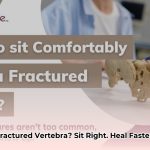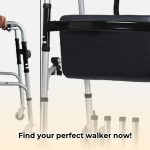Choosing a wheelchair can be daunting, but it doesn’t have to be! This comprehensive guide will help you find the perfect high-back wheelchair for your specific needs, preferences, and lifestyle. We’ll explore everything from the fundamental differences between chair types to essential features, ensuring you make an informed decision that maximizes your comfort, support, and independence.
Understanding Your Needs: Finding the Right High-Back Wheelchair
This guide is designed to simplify the selection process, acting as your personal assistant as you explore the world of high-back wheelchairs. We’ll cover essential information and details, ensuring you have the knowledge to make an informed decision about your mobility and independence.
Reclining vs. Tilt-in-Space: Which is Right for You?
High-back wheelchairs aren’t a one-size-fits-all solution. The two primary types are reclining and tilt-in-space, each offering distinct advantages.
- Reclining Wheelchairs: These chairs allow the backrest to be adjusted independently, while the seat remains fixed. Reclining wheelchairs are ideal for users who need to stretch out, rest, or sleep comfortably in their chair. They can also help alleviate pressure and discomfort from prolonged sitting.
- Tilt-in-Space Wheelchairs: These wheelchairs tilt the entire seat and backrest together, maintaining the user’s hip and knee angle. Tilt-in-space wheelchairs are primarily designed for pressure relief and are particularly beneficial for individuals at high risk of developing pressure sores or who require additional postural support. This design helps redistribute weight and reduce pressure on specific areas of the body.
The best choice between reclining and tilt-in-space depends entirely on your individual needs and comfort levels.
Manual vs. Power: Choosing the Right Drive System
Another critical decision is whether to choose a manual or a power wheelchair.
- Manual Wheelchairs: These chairs are propelled by the user or a caregiver. Manual wheelchairs are generally more affordable, lighter, and easier to transport than power wheelchairs. They are suitable for individuals with sufficient upper body strength and mobility.
- Power Wheelchairs: These chairs are powered by an electric motor and controlled by a joystick or other control mechanism. Power wheelchairs offer greater ease of use and independence, particularly for those with limited upper body strength or mobility. They are ideal for individuals who need to travel longer distances or navigate challenging terrain.
Consider your physical capabilities, lifestyle, and the types of environments you’ll be using the wheelchair in to determine which drive system is best for you.
Essential Features: What to Look for in a High-Back Wheelchair
Here’s a breakdown of the key features to consider when selecting a high-back wheelchair:
- Reclining Angle: The range of reclining angles determines the degree to which the backrest can be adjusted. A wider range of angles allows for greater flexibility and customization, enabling the user to find the most comfortable and supportive position. Look for chairs with a reclining angle of at least 90 to 160 degrees.
- Weight Capacity: It’s critical to select a wheelchair with a weight capacity that exceeds your weight. Exceeding the weight limit can compromise the chair’s stability and safety.
- Seat Width and Depth: Ensure the seat width and depth are appropriate for your body size and shape. A seat that is too narrow or too shallow can cause discomfort and pressure sores.
- Backrest Height and Adjustability: The backrest should provide adequate support for your back and neck. Look for chairs with adjustable backrests that can be customized to your individual needs.
- Armrests: Adjustable armrests can enhance comfort and support, particularly for users who spend long periods in their wheelchair. Look for chairs with height-adjustable armrests that can be easily removed or flipped back for transfers.
- Leg Rests: Elevating leg rests can improve circulation and reduce swelling in the legs and feet. Swing-away leg rests make it easier to get in and out of the chair.
- Frame Material: The frame material affects the wheelchair’s weight, durability, and portability. Aluminum frames are lightweight and rust-resistant, while steel frames are stronger and more durable.
- Wheels and Tires: The type of wheels and tires affects the wheelchair’s maneuverability and ride quality. Pneumatic tires provide a smoother ride on uneven surfaces, while solid tires are more durable and require less maintenance.
- Braking System: A reliable braking system is essential for safety. Look for chairs with easily accessible and effective brakes.
- Safety Features: Anti-tip devices, seat belts, and headrests can enhance safety and prevent accidents.
- Foldability: If you plan to transport your wheelchair frequently, consider a folding model for easier storage and transport.
Step-by-Step Guide: Finding the Perfect High-Back Wheelchair
Follow these steps to navigate the selection process and find the ideal high-back wheelchair for your needs:
Step 1: Assess Your Needs:
- Identify your specific mobility limitations, postural support requirements, and pressure relief needs.
- Consider the environments in which you’ll be using the wheelchair (e.g., home, work, outdoors).
- Determine whether you need a manual or power wheelchair.
- Note your height, weight, and body measurements.
Step 2: Set Your Budget:
- Determine how much you’re willing to spend on a wheelchair.
- Explore funding options, such as insurance, government programs, or charitable organizations.
Step 3: Research and Compare:
- Research different models from various manufacturers.
- Read online reviews and compare specifications.
- Consult with healthcare professionals or mobility specialists.
Step 4: Test Drive (If Possible):
- If possible, try out different wheelchairs before making a purchase.
- Evaluate the chair’s comfort, maneuverability, and ease of use.
- Ensure the chair fits your body properly and provides adequate support.
Step 5: Seek Professional Guidance:
- Consult with an occupational therapist or a mobility specialist.
- They can assess your individual needs and recommend suitable models.
- They can also help you with fitting and adjustments.
Popular High-Back Wheelchair Models
(Note: The following table provides examples of popular high-back wheelchair models. Prices and availability may vary. Always check with retailers for the most up-to-date information.)
| Model Name | Type | Weight Capacity (lbs) | Key Features | Approximate Price Range ($) |
|---|---|---|---|---|
| Karman Healthcare S-Ergo Reclining Wheelchair | Reclining, Manual | 250 | Ergonomic seating, adjustable headrest, swing-away footrests | 700-900 |
| Drive Medical Viper Plus GT Reclining Wheelchair | Reclining, Manual | 300 | Padded armrests, elevating legrests, adjustable headrest extension | 600-800 |
| Invacare AVIVA RX Tilt-in-Space Power Wheelchair | Tilt-in-Space, Power | 300 | Tilt and recline, adjustable seat and back angles, programmable controls | 4,000-6,000 |
| Permobil F5 VS Standing Power Wheelchair | Standing, Power | 300 | Power standing function, tilt and recline, advanced suspension | 20,000+ |
Maintaining Your Wheelchair: Ensuring Longevity
Regular maintenance is essential to prolong your wheelchair’s lifespan and ensure optimal performance. Here are some tips:
- Cleaning: Clean your wheelchair regularly with a damp cloth and mild detergent.
- Inspections: Inspect moving parts regularly for wear and tear.
- Lubrication: Lubricate moving parts as needed.
- Tire Pressure: Maintain proper tire pressure for pneumatic tires.
- Battery Care: Follow the manufacturer’s instructions for battery care (for power wheelchairs).
- Repairs: Address any issues promptly to prevent further damage.
Where to Buy: Finding Reputable Retailers
High-back wheelchairs are available from a variety of retailers, including:
- Medical supply stores
- Online retailers specializing in mobility equipment
- Mobility specialists
Compare prices, check return policies, and read customer reviews before making a purchase.
Conclusion: Enhancing Your Mobility and Comfort
Choosing a high-back wheelchair is an important decision that can significantly impact your comfort, mobility, and independence. By understanding your needs, exploring your options, and seeking professional guidance, you can find the perfect chair to enhance your quality of life.
Pressure Sore Prevention: Choosing the Right High-Back Reclining Wheelchair
Key Takeaways:
- Reclining and tilt-in-space wheelchairs offer distinct benefits for pressure relief.
- Essential features include reclining angle, weight capacity, and adjustable components.
- Material choices impact durability and weight.
- Proper maintenance is crucial for extending the wheelchair’s lifespan.
Types of High-Back Wheelchairs for Pressure Management
- Reclining Wheelchairs: Adjust the backrest angle independently, providing comfort and rest.
- Tilt-in-Space Wheelchairs: Tilt the entire seat and backrest simultaneously, redistributing weight to prevent pressure sores.
The choice depends on individual needs and the level of mobility. Power chairs offer ease of use, while manual models
- Doctor Work Life Balance: Proven Strategies for Physician Well-being - November 20, 2025
- Find Your Work-Life Harmony: Quotes for a Fulfilling Life - November 18, 2025
- CRNA Work-Life Balance: Strategies for a Healthier Lifestyle - November 16, 2025
















